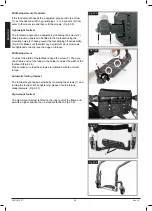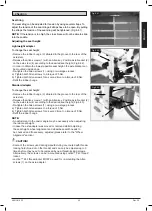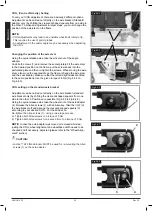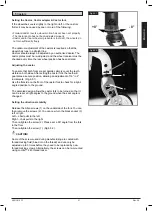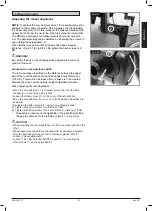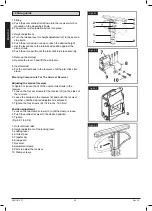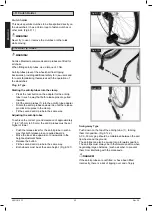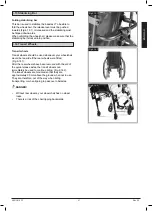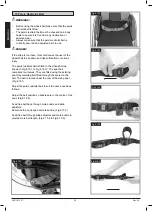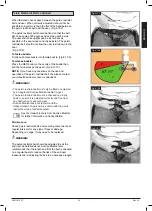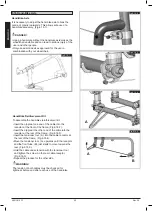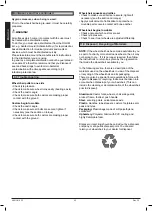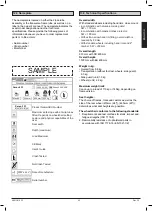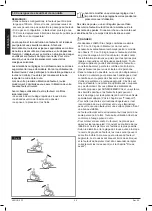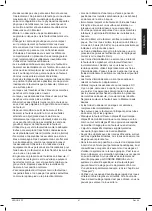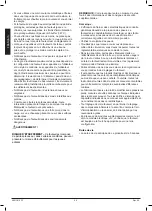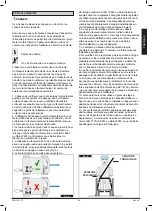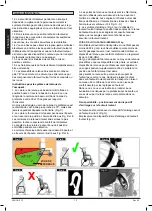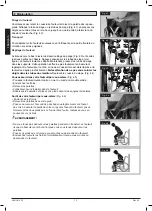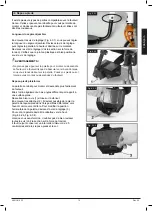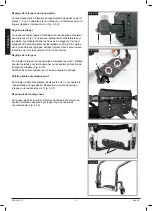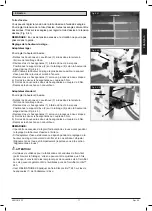
ENGLISH
XENON 2 FF 62
Rev.3.0
Hygiene measures when being re-used:
Prior to the wheelchair being re-used, it must be carefully
prepared.
WARNING!
All surfaces which come into contact with the user must
be treated with a disinfection spray.
To do this, you must use a disinfectant from the DGHM
list, e.g. Antifect Liquid (Schülke & Mayr) for rapid alcohol-
based disinfection for medical products and medical
devices, which must be disinfected quickly.
Please take into account the manufacturer's instructions
for the disinfectant you are using.
In general, a complete disinfection cannot be guaranteed
on seams. We therefore recommend that you dispose of
seat and back slings to avoid micro bacterial
contamination with active agents according to § 6
infection protection law.
10.0 Troubleshooting
Wheelchair pulls to one side
• Check tyre pressure
• Check to make sure wheel turns easily (bearings, axle)
• Check the castor angle
• Check to make sure both castors are making proper
contact with the ground
Castors begin to wobble
• Check the castor angle
• Check to make sure all bolts are secure; tighten if
necessary (see the section on torque)
• Check to make sure both castors are making proper
contact with the ground
Wheelchair squeaks and rattles
• Check to make sure all bolts are secure; tighten if
necessary (see the section on torque)
• Apply small amount of lubrication to spots where
movable parts come in contact with one another.
Wheelchair begins to wobble
• Check angle at which castors are set
• Check tyre pressure
• Check to see if rear wheels are adjusted differently.
11.0 Disposal / Recycling of Materials
NOTE:
If the wheelchair has been made available to you
as part of a charity or medical loans scheme, then it may
not belong to you . If it is no longer required, then follow
the instructions to return it as given by the organisation
that made the wheelchair available to you.
In the following section, there is a description of the
materials used on the wheelchair, in view of the disposal
or recycling of the wheelchair and its packaging.
There may also be special local regulations in force with
regard to disposal or recycling, these must be taken into
account when disposing of your wheelchair. (This can
include the cleaning or decontamination of the wheelchair
prior to disposal).
Aluminium:
Castor forks, wheels, chair side guards,
armrest frame, footrest, push handle
Steel:
securing points, quick-release axle
Plastic:
Handles, tube stoppers, castors, footplates, arm
pads and tyres
Packaging:
Plastic bags made of soft polyethylene,
cardboard
Upholstery:
Polyester fabric with PVC coating and
highly-flammable foam.
Disposal or recycling should be carried out by a disposal
company or at a public disposal point. You can also
return your wheelchair to your dealer for disposal.
Maintenance and Care continued

